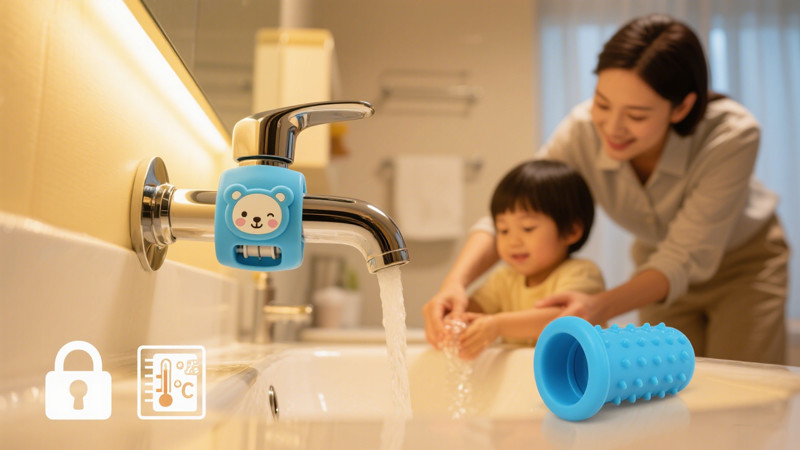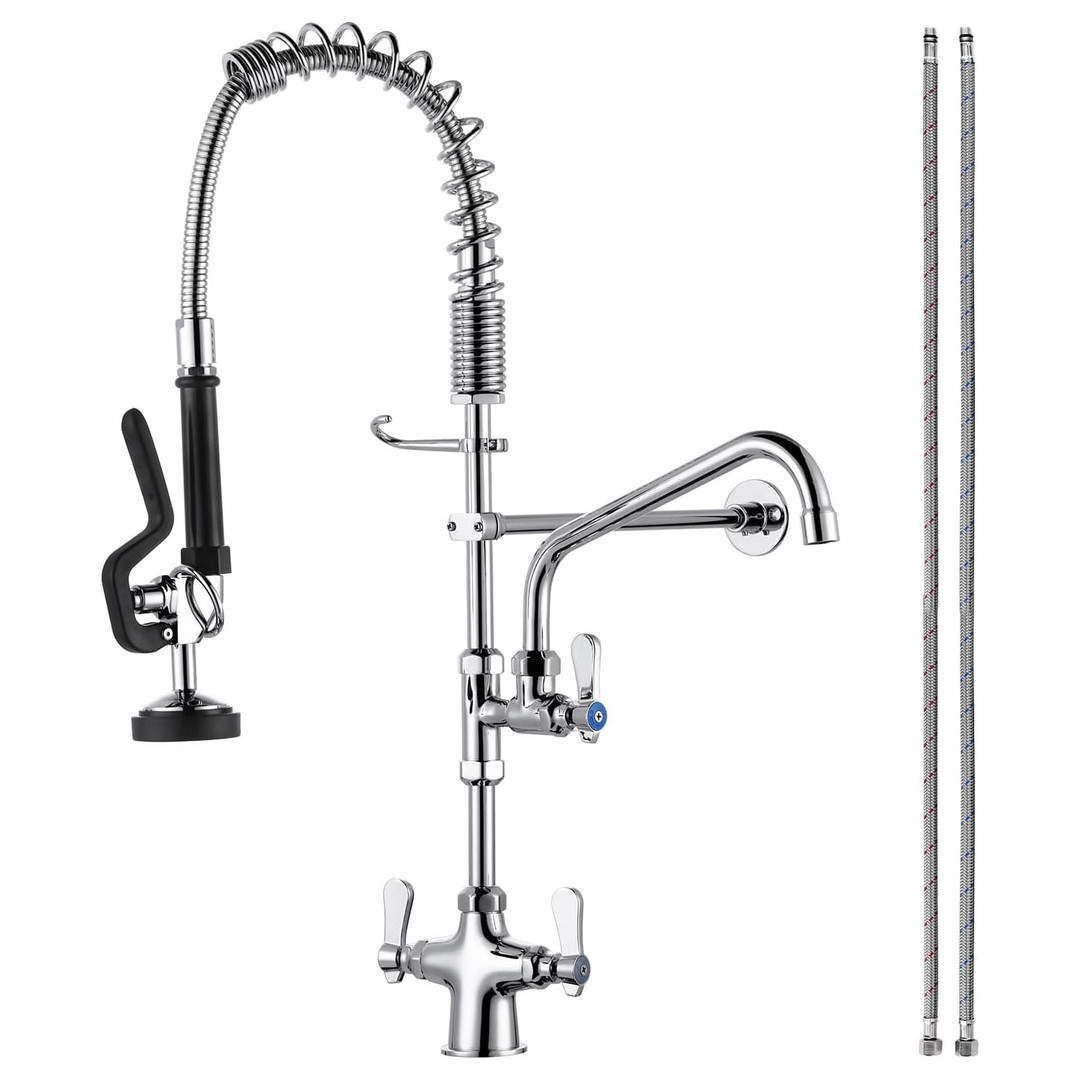
Faucets might seem harmless, but for curious toddlers and small children, they can pose serious safety risks. Whether it’s the risk of scalding hot water, accidental flooding, or just a slippery mess, child-proofing your faucets is a smart move for any parent.
In this post, we’ll walk you through the reasons to child-proof your faucet, the best products to use, and simple DIY methods to protect your little one—and your plumbing.
Why You Should Child-Proof Faucets
Children are naturally curious. A shiny faucet handle or a steady stream of water can quickly become a plaything. Here’s why that’s a problem:
-
Scalding Risk: Children’s skin is more sensitive than adults’. Hot water can cause burns in just seconds.
-
Flooding & Water Damage: A child turning on a faucet and walking away could lead to an overflowing sink or tub.
-
Slipping Hazards: A wet bathroom floor increases the risk of falls—for both children and adults.
-
Water Waste: Left running, faucets can waste gallons of water and increase your utility bills.
By taking the time to child-proof your faucets, you’re preventing accidents and encouraging safe habits early on.
When Should You Start?
Ideally, start child-proofing when your child becomes mobile—crawling or walking. That’s usually between 6 and 12 months old. By this age, children begin to explore their surroundings, and anything within reach becomes fair game.
Even if your baby isn’t turning knobs yet, setting up early helps you stay one step ahead.
Types of Faucet Safety Devices
There are many products designed specifically to make faucets child-safe. Here are the most effective options:
1. Faucet Handle Covers or Locks
These plastic or silicone covers prevent your child from gripping or turning the faucet handle. Some models also include a locking mechanism to keep handles from moving entirely.
-
Best for: Bathroom and kitchen sink faucets
-
Tip: Choose models that fit your faucet’s handle type (lever vs. knob)
2. Anti-Scald Devices
These devices regulate water temperature at the faucet, preventing it from getting hot enough to cause burns. They can be installed under the sink or directly onto the faucet spout.
-
Best for: Bathrooms with inconsistent water heating
-
Tip: Look for models that cap water temp at 120°F (49°C)
3. Tub Spout Covers
These soft rubber or foam covers fit over bathtub spouts, protecting your child from bumping their head and making it harder to access the faucet.
-
Best for: Bathtubs and shower areas
-
Bonus: Many come with fun shapes like whales or elephants to make bath time more enjoyable.
4. Faucet Extenders (with Safety Features)
While faucet extenders are usually for convenience (helping kids reach the water), some models include flow control or shut-off valves, adding an extra layer of safety.
-
Best for: Toddlers learning to wash hands independently
DIY Child-Proofing Tips
Not all child-proofing needs to involve expensive gadgets. Here are some easy and affordable solutions:
Adjust Your Water Heater Temperature
Set your home’s water heater to 120°F (49°C) or lower to reduce the risk of scalding. This is the single most effective step you can take for faucet safety.
Remove or Disable Faucet Handles Temporarily
If you’re not using a particular sink often, consider removing the handle or turning off the water supply beneath the sink. This creates a temporary but effective barrier.
Use Hair Ties or Velcro Straps
Wrap a sturdy hair tie or Velcro strap around double faucet handles to make them harder for small hands to turn.
Supervise Always
While not a physical solution, supervision is your most reliable tool. Never leave young children alone in the bathroom or kitchen, even for a few seconds.
Faucet Safety by Room
🛁 Bathroom
This is where the majority of faucet-related accidents happen.
-
Install tub spout covers and anti-scald devices
-
Use slip-resistant mats around sinks and tubs
-
Keep all cleaning products and personal care items out of reach
🍽️ Kitchen
Kitchens are filled with hot water, sharp objects, and distractions.
-
Lock kitchen faucet handles or install child-proof covers
-
Don’t let kids stand or climb near the sink area
-
Keep hot pots and pans away from the faucet zone
🧺 Laundry/Utility Rooms
If your laundry area has a sink or faucet, don’t forget it!
-
Use a child-proof cover on utility faucets
-
Consider closing off the area with a safety gate
Signs Your Child-Proofing Is Working
Once you’ve put your child-proofing measures in place, you should notice:
-
Less interest from your child in the faucet itself
-
No surprise floods or running water sounds
-
Your child asking for help instead of climbing or experimenting
It’s always a good idea to regularly reassess your safety setup as your child grows. What worked at age one might not be enough at age three.
When Can You Remove Child-Proofing?
Typically, child-proofing is no longer necessary once your child consistently understands the cause-and-effect relationship between hot water and burns—or shows the maturity not to turn on faucets unattended. This is usually around age 5–6, but it varies for every child.
Until then, it’s better to err on the side of caution.
Final Thoughts
Child-proofing a faucet is one of those small steps that can make a big difference in your home’s overall safety. From preventing burns to avoiding floods, the right tools and habits give you peace of mind and keep your child safe.
Start with the basics—adjusting water temperature and installing a handle cover—and build up as needed. You don’t have to spend a fortune to make your bathroom and kitchen child-safe. Just a little time and awareness go a long way.
Remember, water safety starts with you. A secured faucet today can prevent an emergency tomorrow.
 iVIGA Faucet Online Shop
iVIGA Faucet Online Shop

